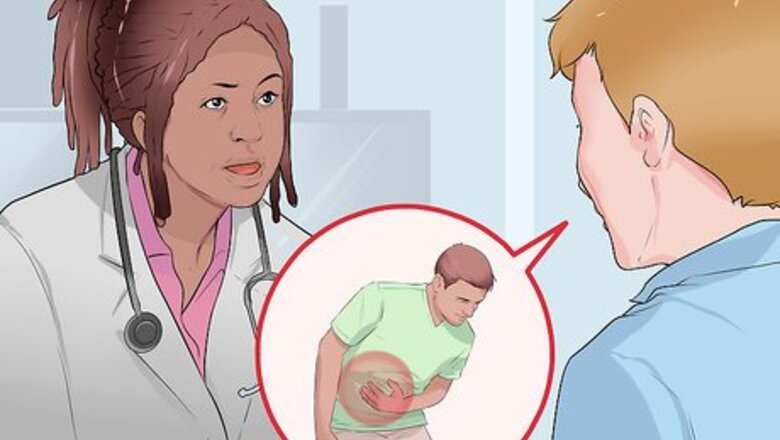
views
X
Trustworthy Source
National Health Service (UK)
Public healthcare system of the UK
Go to source
Acute pancreatitis can be differentiated from other conditions by carefully assessing the signs and symptoms as well as by ordering investigative tests. If you do have acute pancreatitis, it is important to have it treated promptly.
Assessing Signs and Symptoms
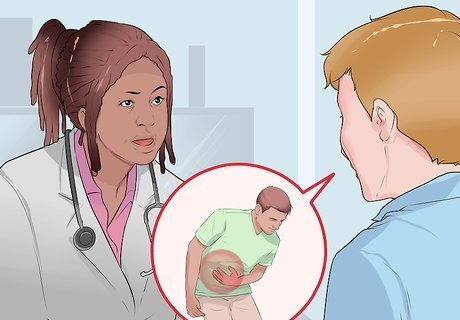
Describe the quality of your abdominal pain to your doctor. Acute pancreatitis presents with severe and sudden abdominal pain; however, it can be differentiated from other similar conditions in part by describing the specific nature of your pain. Qualities of your pain that point toward pancreatitis as the more likely cause include: Pain that radiates through to your back — This is the number one symptom of pancreatic problems Pain that is located on the upper middle part of your abdomen Pain that is worse after eating
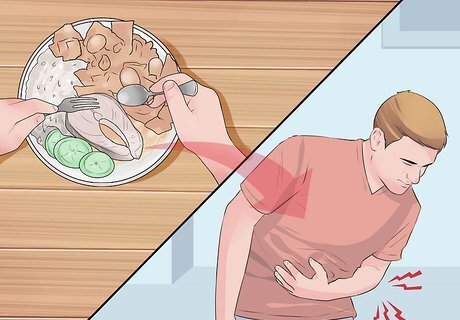
Consider the onset of your abdominal pain. Acute pancreatitis, as the name suggests, comes on suddenly. It is a pain that is constantly present, and often feels like a stabbing sensation that gets worse after eating. If your pain comes on gradually, or has been present for a long time, it is likely from another cause. The term 'acute pancreatitis' is used to describe the first few episodes of pancreatitis that you might have. If the problem continues, it's considered 'chronic pancreatitis.'

Tell your doctor about associated nausea and/or vomiting. It is very common for acute pancreatitis to be accompanied by nausea and vomiting, and this can be used to differentiate it from other causes of abdominal pain; however, nausea and/or vomiting does not always mean pancreatitis. It could mean something else such as a gut infection or food poisoning. You might also have diarrhea, especially after you eat something fatty. That happens because if you have pancreatitis, your pancreas won't be able to help your body process fat.
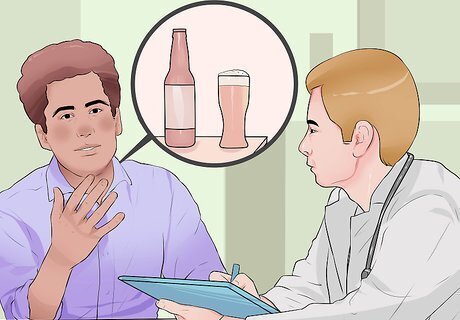
Open up to your doctor about your alcohol consumption. Excess alcohol consumption is the number one risk factor in the development of pancreatitis; therefore, it is key to be honest and upfront with your doctor about how much alcohol you drink and how frequently. Another major risk factor for acute pancreatitis is a history of gallstones. If you have had gallstones once (or more times) in the past, it is more likely for them to return, and they can provoke an episode of acute pancreatitis.
Investigating Further

Receive blood tests. If you present to the Emergency Room (or to your doctor) with acute abdominal pain, one of the quickest ways to identify a pancreas-related cause is to test your pancreas function via blood tests. If you have elevated levels of pancreatic enzymes in your blood, this means that your pancreas is under stress. It indicates to your doctor that you may very well be suffering from pancreatitis as opposed to another condition. Elevated serum amylase and lipase in your blood point toward pancreatitis as the underlying cause. This is the number on symptom for pancreatic problems. Amylase and lipase are the pancreatic enzymes that leak out into the blood of the pancreas when it becomes inflamed. Elevated amylase levels can can be seen in other problems with the stomach and liver, but lipase is very specific to the pancreas. Other results that are important when testing for acute pancreatitis include elevations in C reactive protein and interleukins.
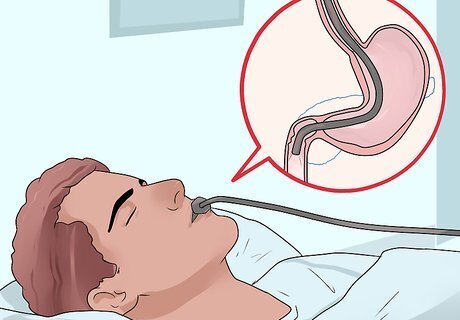
Opt for an endoscopic ultrasound. An endoscopic ultrasound (EUS) is a procedure in which an ultrasound probe with a camera is inserted down your esophagus, through your stomach, and down the first part of your small intestine toward the pancreas. It provides a much more detailed view of the pancreas, and it can provide your doctor with valuable information as to the specific underlying cause of your pancreatitis. An EUS also evaluates the upper GI tract (esophagus, stomach, and upper part of the small intestine) en route to getting to the pancreas. Therefore, an EUS can help to include or rule out other upper GI causes that could be the reason for your abdominal pain.
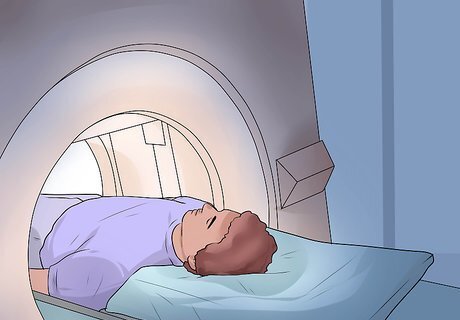
Have a CT scan. If you have acute abdominal pain, your doctor may order a CT scan. A CT scan provides a detailed image of the abdominal anatomy allowing doctors to recognize many different medical conditions. You will be laying down while the imaging device surrounds you (there is plenty of space so it is not claustrophobic), and the process only takes a few minutes. Acute pancreatitis may present with gallstones on the CT scan (as this is a common cause for pancreatitis). The CT scan will likely also show generalized pancreas inflammation.
Treating Acute Pancreatitis

Stay in the hospital until your condition stabilizes. Because the pain of acute pancreatitis can be quite severe, and worse with eating and drinking, your doctor will likely recommend a hospital stay while you recover. A few days in hospital may be sufficient, or it may take longer depending upon the severity of your pancreatitis. The mainstay treatment of acute pancreatitis is fluid replacement and pain control.
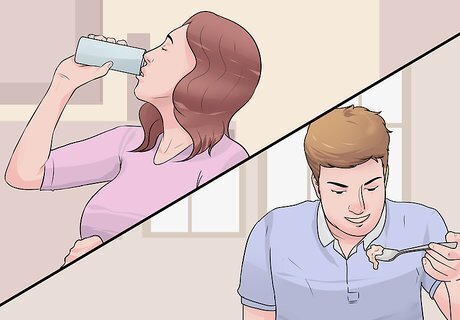
Refrain from eating or drinking during acute pancreatitis. For the first couple of days in hospital, your doctor will advise that you do not eat or drink as refraining from these things will give your pancreas a "rest" and allow it to recover. As your pancreas recovers, you can gradually return to eating and drinking. You will normally start by drinking clear fluids, then by adding in some bland foods and, when your condition is mostly better, you may resume your normal diet. In severe cases of pancreatitis, a feeding tube may be necessary to get you the nutrients and calories you need while your pancreas recovers. You will always be given IV fluids to stay hydrated during acute pancreatitis, and basic calories (sugars) can be given through the IV line as well.
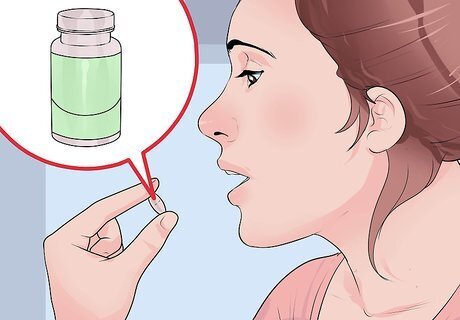
Take medications to ease your pain. The strength of pain medication that your doctor offers you will depend upon the severity of your pain. In worse cases of acute pancreatitis, you will likely receive an opioid (narcotic) pain medication. When you are discharged from the hospital and your pain has mostly resolved, over-the-counter pain medications may be sufficient to control any residual pain, if your pain has not yet completely resolved.
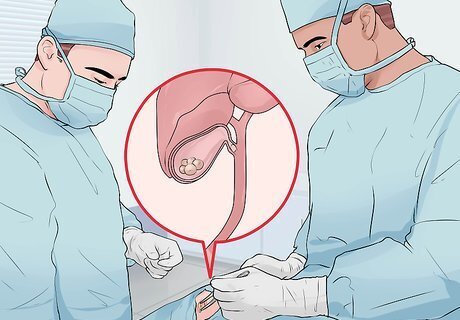
Treat the underlying cause of your pancreatitis. Once your pain has been controlled and your condition stabilized, your doctor will want to identify and then treat the cause of your acute pancreatitis. Common causes and treatments include: Gallstones — These can be removed surgically, and your gallbladder may need to be removed as well. Your doctor may also prescribe antibiotics. Bile duct obstructions — You will likely receive a procedure (called ERCP) to open or widen your bile duct, and to repair any damage that is found. Damaged or dead pancreas tissue may also need to be removed, and this may require surgery. This will be completed after the inflammation resolves and you are healed. Alcohol dependence — Excess alcohol consumption is the number one risk factor for developing acute pancreatitis. If alcohol problems are the issue, it is key to receive treatment for this. Talk to your doctor there are rehabilitation clinics and 12 Step programs that are available if you have a serious problem with drinking.




















Comments
0 comment